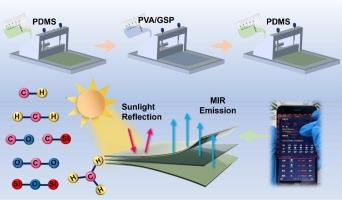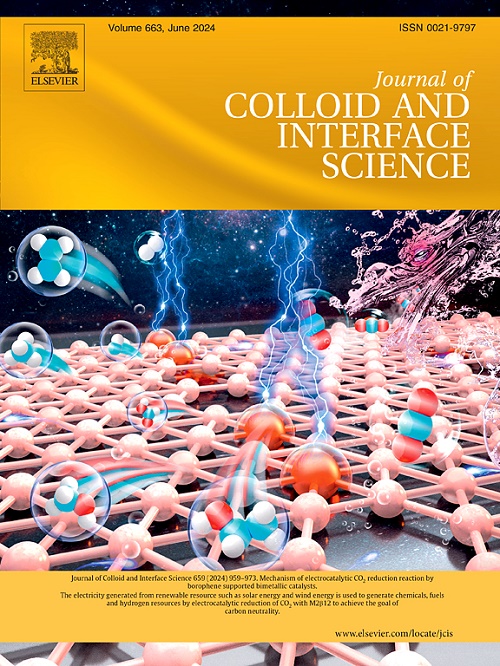Sustainable passive radiation cooling transparent film for mobile phone protective screens
IF 9.4
1区 化学
Q1 CHEMISTRY, PHYSICAL
引用次数: 0
Abstract
Passive daytime radiative cooling (PDRC) is a promising approach to address energy, environmental, and safety issues caused by global warming, with high emissivity in a transparent atmospheric window and high reflectivity in the solar spectrum. However, most demonstrations of PDRC rely mainly on complex and expensive spectral selective nanophotonic structures, requiring specialized photonic structures that are both expensive and difficult to obtain. The superiorities of low-cost, abundant resources, renewability, and high value-added biomass resources prompt Gleditsia sinensis polysaccharides (GSP) to be used in thermal emission materials to explore further the characteristics of regulating object temperature within a specific range without any external energy consumption. The three-layer thermal emission film (PDMS3PG3/t4) obtained by the scalable scraping method has high transparency, hydrophobicity (114.2°), and super flexibility. The spectral variations of non-selective PDMS3PG3/t4 (1.0 wt% GSP, 800 μm thickness) in the 3–5 μm and 8–13 μm waveband ranges were discussed in detail, and high emissivities of 69.1 % and 92.2 % were obtained, respectively. PDMS3PG3/t4 was appointed a mobile phone screen film and experimented with a 4.9 °C average temperature difference below ambient temperature, materializing prime PDRC and desiring to broaden the passive cooling technology and reduce the global energy burden.

用于手机保护屏的可持续被动辐射冷却透明薄膜。
被动式日间辐射冷却(PDRC)在透明大气窗口中具有高发射率,在太阳光谱中具有高反射率,是解决全球变暖引起的能源、环境和安全问题的一种很有前途的方法。然而,大多数 PDRC 演示主要依赖于复杂而昂贵的光谱选择性纳米光子结构,需要既昂贵又难以获得的专用光子结构。中华皂苷多糖(Gleditsia sinensis polysaccharides,GSP)具有成本低、资源丰富、可再生、生物质资源附加值高等优势,可用于热发射材料,进一步探索在不消耗任何外部能源的情况下,在特定范围内调节物体温度的特性。通过可扩展刮削法获得的三层热辐射薄膜(PDMS3PG3/t4)具有高透明度、疏水性(114.2°)和超柔性。详细讨论了非选择性 PDMS3PG3/t4(1.0 wt% GSP,厚度 800 μm)在 3-5 μm 和 8-13 μm 波段范围内的光谱变化,分别获得了 69.1 % 和 92.2 % 的高发射率。PDMS3PG3/t4 被指定为手机屏幕薄膜,并在低于环境温度 4.9 ℃ 的平均温差下进行了实验,实现了首要的 PDRC,有望拓宽被动冷却技术,减轻全球能源负担。
本文章由计算机程序翻译,如有差异,请以英文原文为准。
求助全文
约1分钟内获得全文
求助全文
来源期刊
CiteScore
16.10
自引率
7.10%
发文量
2568
审稿时长
2 months
期刊介绍:
The Journal of Colloid and Interface Science publishes original research findings on the fundamental principles of colloid and interface science, as well as innovative applications in various fields. The criteria for publication include impact, quality, novelty, and originality.
Emphasis:
The journal emphasizes fundamental scientific innovation within the following categories:
A.Colloidal Materials and Nanomaterials
B.Soft Colloidal and Self-Assembly Systems
C.Adsorption, Catalysis, and Electrochemistry
D.Interfacial Processes, Capillarity, and Wetting
E.Biomaterials and Nanomedicine
F.Energy Conversion and Storage, and Environmental Technologies

 求助内容:
求助内容: 应助结果提醒方式:
应助结果提醒方式:


